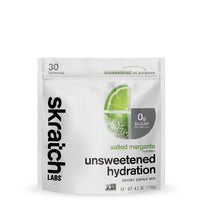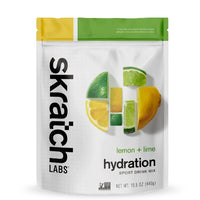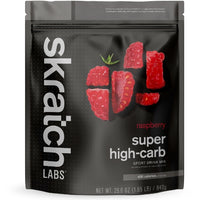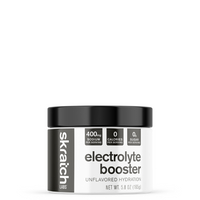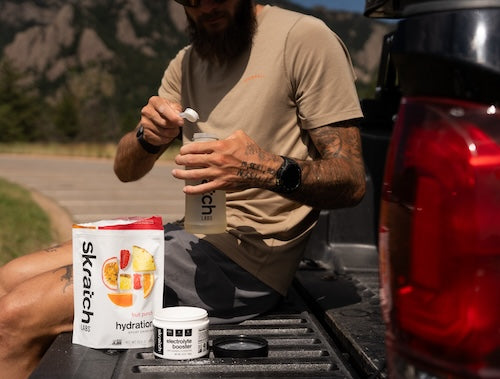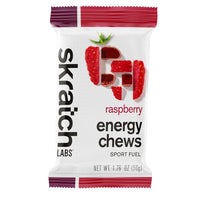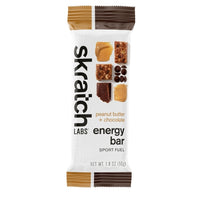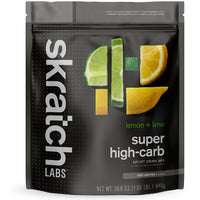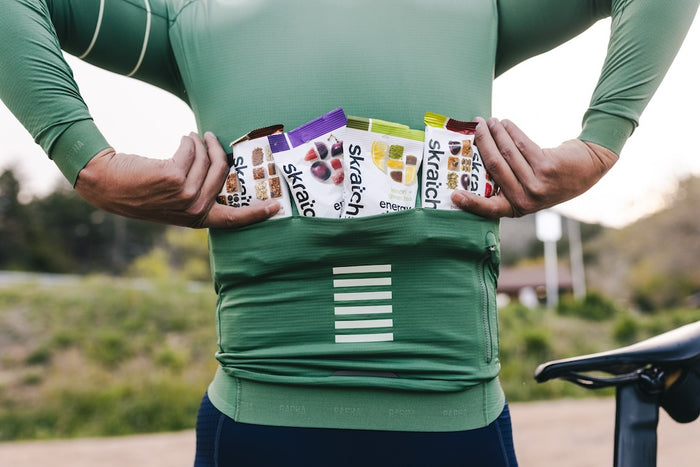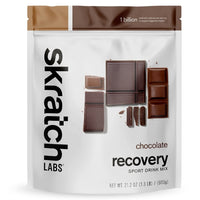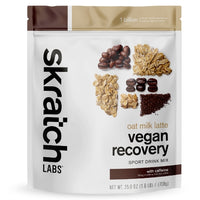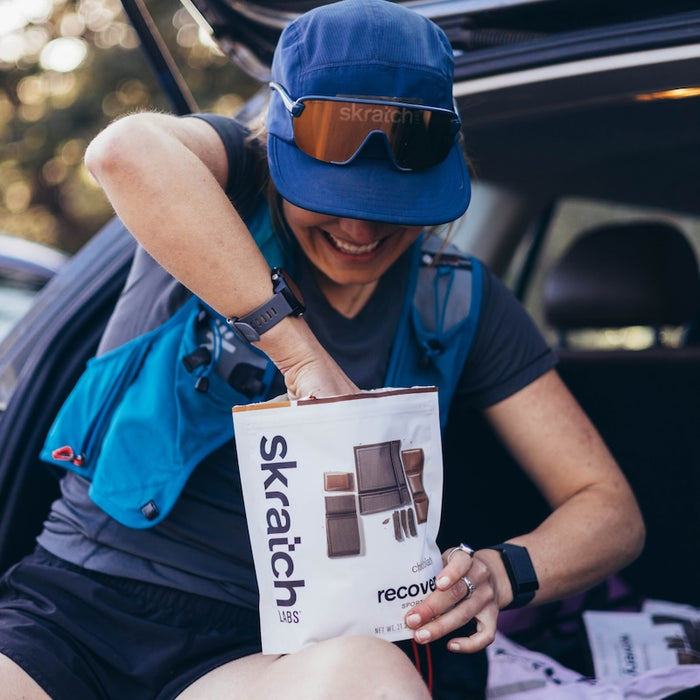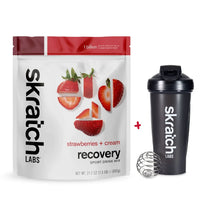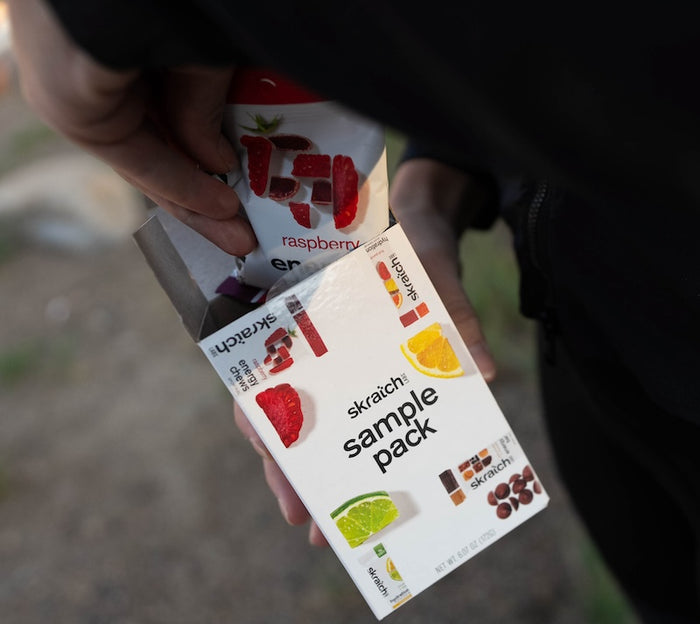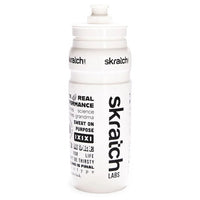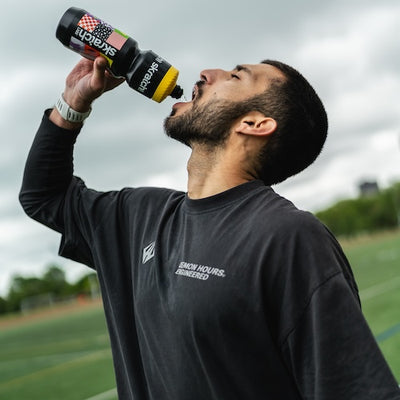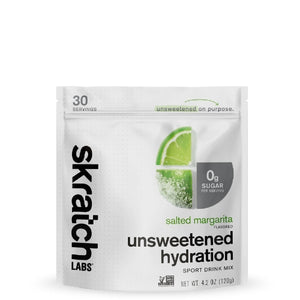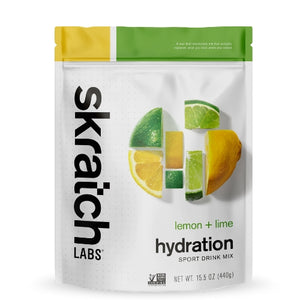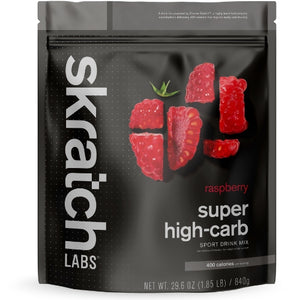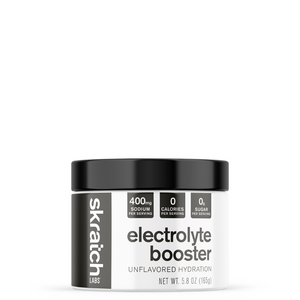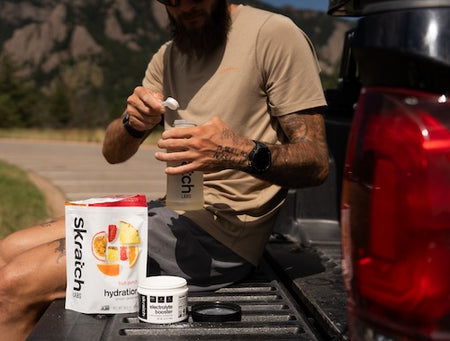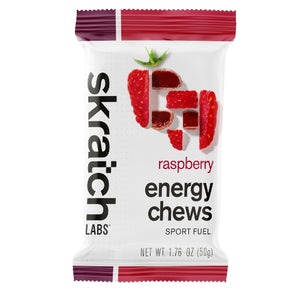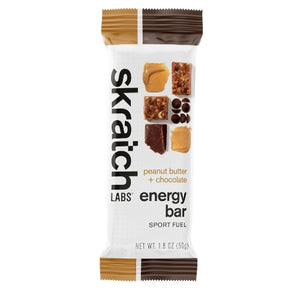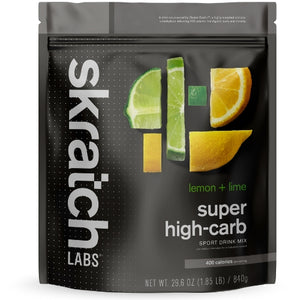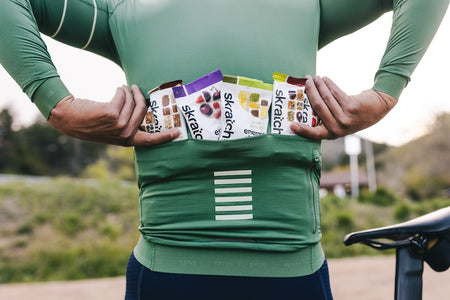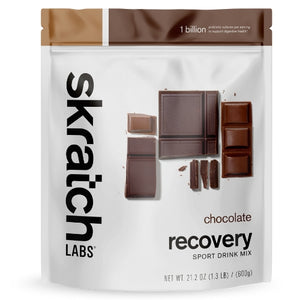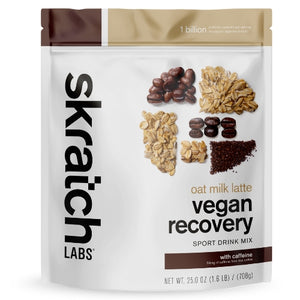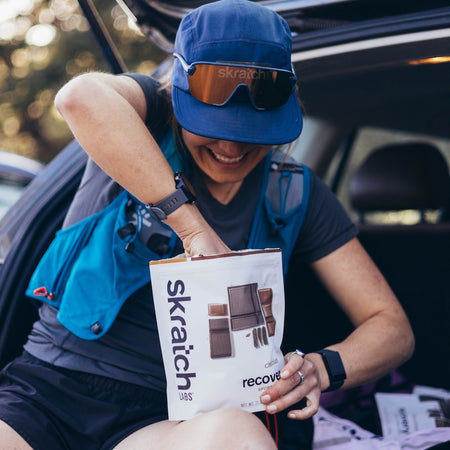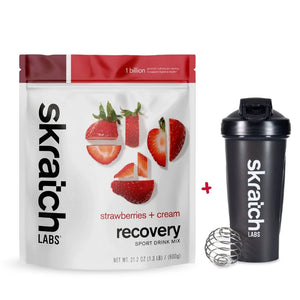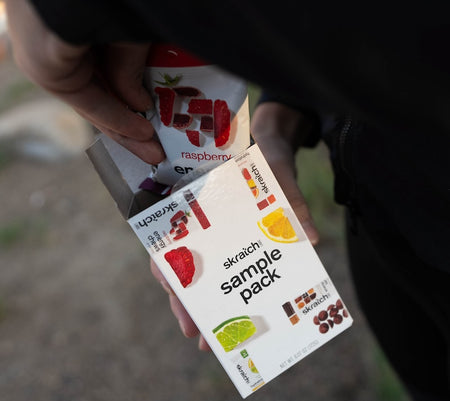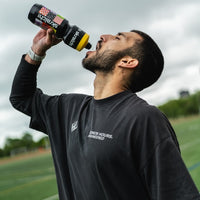Ever gone for a run in the mountains and felt like someone swapped your lungs for a pair of tiny bellows? Welcome to altitude.
Training or racing above sea level can feel brutal — but that struggle can trigger powerful adaptations if you do it right. Whether you're prepping for a high-altitude event or just curious about the science behind “thinner air,” here’s your full guide to how altitude impacts your body, performance, and training + plus how to prepare.
🧠 Why Altitude Makes Exercise Harder
At higher elevations, oxygen molecules are more spaced out. You’re not breathing less oxygen, but the air pressure — specifically, the partial pressure of oxygen — drops. That means less pressure pushing oxygen from your lungs into your blood.
As a result, everything from walking to working out becomes more taxing. Your body has to work overtime to move and use what little oxygen it can get.
Oxygen matters because it’s what your body uses to generate energy. Without enough of it, endurance, recovery, and even brain function can suffer.
🧬 How Your Body Responds to Altitude
There are two phases: immediate responses (the first few days) and longer-term adaptations (after 2–3 weeks).
🔄 Immediate Effects (First 72 Hours)
- ⬆️ Faster breathing = more moisture lost through breath
- ⬆️ Urination → mild dehydration
- ⬆️ Heart rate and ventilation
- ⬇️ Appetite
- ⬆️ Reliance on carbs (glycogen) for energy
- ⬆️ Iron needs due to initial red blood cell production signals
- 🧠 Possible symptoms: headaches, poor sleep, mild inflammation
Your plasma volume (the liquid part of blood) also drops, concentrating hemoglobin (the protein that carries oxygen) in the short term — but increasing dehydration risk. So hydration is mission-critical.
⏳ Longer-Term Adaptations (2–3+ Weeks)
If you stay up high long enough, your body starts to level up:
- ⬆️ Red blood cell count and hemoglobin
- ⬆️ Oxygen-carrying capacity
- ⬆️ Capillary density (more tiny blood vessels)
- ⬆️ Mitochondrial efficiency
- ⬇️ Resting heart rate (as stroke volume and blood oxygenation improve)
These adaptations can lead to better oxygen delivery, improved exercise tolerance, and (for some) better sea-level performance post-altitude.
🏃 VO₂ Max & Exercise Intensity at Altitude
VO₂ is the volume of oxygen your body uses during exercise.
VO₂ Max is your maximum oxygen delivery capacity — a key marker of endurance potential.
At altitude, VO₂ max drops, because your body simply can’t absorb as much oxygen. This means:
- A workout that feels easy at sea level feels harder at elevation — even if pace stays the same
- Your relative intensity goes up — you're working closer to your max for the same effort
- Training intensity may suffer until you acclimate, which can limit performance gains if not planned well
Note: Some people adapt quickly, others don’t — genetics and iron status can both play a role.
🧪 Does Altitude Training Actually Work?
Short answer: It can, with the right approach.
🥇 The Gold Standard: Live High, Train Low (LHTL)
- Live and sleep at altitude to stimulate red blood cell production
- Train at lower elevations so you can still hit high intensities
- Used by elite athletes to gain both aerobic efficiency and training quality
🤷♀️ But Does VO₂ Max Improve?
The science is mixed:
- Some studies show increases in VO₂ max and performance after altitude blocks
- Others show no change — possibly due to detraining (can’t go as hard up high) or individual variability
- Either way, many athletes report improved sea-level race results after altitude acclimation
🛠️ How to Prepare for Altitude
1. Hydration Is Non-Negotiable
You lose more water at altitude due to faster breathing and urination.
- Start hydrating days before travel
- Add electrolytes (like Skratch Drink Mixes)
- Monitor urine color and bathroom frequency
- Drink regularly — not just during workouts
2. Check Your Iron
Iron is key for building hemoglobin and red blood cells.
- Get bloodwork 6–8 weeks before altitude training or racing
- If low, add iron-rich foods (beef, lentils, eggs) or consider supplements (talk to your doc or dietitian)
- Women, menstruating athletes, and plant-based eaters may need to be especially mindful
3. Fuel Early and Often
Your body burns through carbs faster at altitude.
- Don’t skip meals — even if your appetite drops
- Eat 3 balanced meals + 2–4 snacks daily
- Consider liquid fuel (like our Super High-Carb Drink Mix) when eating is tough
- Pack extra food for training — cravings and needs may shift mid-effort
4. Prioritize Sleep
Sleep can take a hit up high.
- Bring earplugs, eye masks, familiar bedding
- Try tart cherry juice or magnesium
- Skip caffeine and alcohol before bed
- Take extra rest days as needed
5. Ease Into Elevation
Altitude sickness can hit as low as 6,000 ft.
- If possible, gain elevation gradually
- Fly into a mid-altitude city (like Denver ~5,000 ft), then spend a day or two there before heading higher
- “Pole pole,” as they say on Kilimanjaro — “slowly, slowly” wins at altitude
6. Consider Altitude Meds (for non-competitive scenarios)
If heading to extreme altitudes (trekking, travel), talk to your doctor about acetazolamide or other preventive meds.
Pro tip: even athletes can benefit when going from sea level to 10,000+ ft quickly.
⏰ Race-Day Timing Tips
Best case:
- Arrive at altitude 14+ days before race day
- Rest for the first 1–2 days
- Allow time to acclimate and resume full training gradually
Can’t get there early?
- Arrive just 24–36 hours before race day (before full symptoms kick in)
- Know it’ll feel harder
- Dial back pacing and fuel + hydrate aggressively
📌 What Counts as “Altitude”?
|
Altitude Level |
Meters |
Feet |
Impact |
|
Near Sea Level |
0–500 m |
0–1,640 ft |
Minimal |
|
Low Altitude |
500–2,000 m |
1,640–6,562 ft |
Minor aerobic impairment |
|
Moderate Altitude |
2,000–3,000 m |
6,562–9,843 ft |
Acclimatization may be needed |
|
High Altitude |
3,000–5,000 m |
9,843–16,404 ft |
Significant impact |
|
Extreme Altitude |
>5,500 m |
>18,045 ft |
Deterioration begins |
🧠 Final Thoughts
Altitude is a stressor. Handled smartly, that stress can trigger adaptations that supercharge your performance.
Respect the mountain. Hydrate. Fuel. Sleep. Train specifically for your event.
And if you do decide to come train in the Rockies? Come stop by Skratch Table for all your fueling and Skratch needs.
Citations
-
Bahenský, P., Bunc, V., Tlustý, P., & Grosicki, G. J. (2020). Effect of an Eleven-Day Altitude Training Program on Aerobic and Anaerobic Performance in Adolescent Runners. Medicina, 56(4), 184. https://doi.org/10.3390/medicina56040184
-
Bärtsch, P., & Gibbs, J. S. R. (2007). Effect of Altitude on the Heart and the Lungs. Circulation, 116(19), 2191–2202. https://doi.org/10.1161/CIRCULATIONAHA.106.650796
-
Brooks, G. A., Fahey, T. D., & Baldwin, K. M. (2005). Exercise Physiology: Human Bioenergetics and Its Application (4th ed.). McGraw-Hill.
-
Grocott, M. P. W., Levett, D. Z. H., & Ward, S. A. (2019). Exercise physiology: Exercise performance at altitude. Current Opinion in Physiology, 10, 210–218. https://doi.org/10.1016/j.cophys.2019.06.008
-
MacInnis, M. J., Wang, P., Koehle, M. S., & Rupert, J. L. (2011). The Genetics of Altitude Tolerance: The Evidence for Inherited Susceptibility to Acute Mountain Sickness. Journal of Occupational and Environmental Medicine, 53(2), 159–168.
-
Mazzeo, R. S. (2008). Physiological Responses to Exercise at Altitude. Sports Medicine, 38(1), 1–8. https://doi.org/10.2165/00007256-200838010-00001
-
Park, H., Hwang, H., Park, J., Lee, S., & Lim, K. (2016). The effects of altitude/hypoxic training on oxygen delivery capacity of the blood and aerobic exercise capacity in elite athletes – a meta-analysis. Journal of Exercise Nutrition & Biochemistry, 20(1), 15–22. https://doi.org/10.20463/jenb.2016.03.20.1.3
-
Pasricha, S.-R., Low, M., Thompson, J., Farrell, A., & De-Regil, L.-M. (2014). Iron Supplementation Benefits Physical Performance in Women of Reproductive Age: A Systematic Review and Meta-Analysis. The Journal of Nutrition, 144(6), 906–914. https://doi.org/10.3945/jn.113.189589
-
Saunders, P. U., Garvican-Lewis, L. A., Schmidt, W. F., & Gore, C. J. (2013). Relationship between changes in hemoglobin mass and maximal oxygen uptake after hypoxic exposure. British Journal of Sports Medicine, 47(Suppl 1), i26–i30. https://doi.org/10.1136/bjsports-2013-092841
-
Seitz, H., Preissler, E., Catalá-Lehnen, P., & Weitl, M. (2020). Effects of the ‘live low-train high’ method on variables of endurance capacity. A systematic review. Deutsche Zeitschrift Für Sportmedizin, 71(2), 43–50. https://doi.org/10.5960/dzsm.2019.413
-
Wilhite, D. P., Mickleborough, T. D., Laymon, A. S., & Chapman, R. F. (2013). Increases in .VO2max with “live high-train low” altitude training: Role of ventilatory acclimatization. European Journal of Applied Physiology, 113(2), 419–426. https://doi.org/10.1007/s00421-012-2443-4
-
British Journal of Sports Medicine. The individual response to training and competition at altitude. (n.d.). Retrieved from https://bjsm.bmj.com/content/47/Suppl_1/i40.short
-
Sim, M., Garvican-Lewis, L. A., Cox, G. R., Govus, A., McKay, A. K. A., Stellingwerff, T., & Peeling, P. (2019). Iron considerations for the athlete: A narrative review. European Journal of Applied Physiology, 119, 1463–1478.
-
Sawka, M. N., et al. (2007). American College of Sports Medicine Position Stand. Exercise and Fluid Replacement. Medicine & Science in Sports & Exercise, 39, 377–390. https://doi.org/10.1249/mss.0b013e31802ca597
-
Bergeron, M. F., et al. (2012). International Olympic Committee consensus statement on thermoregulatory and altitude challenges for high-level athletes. British Journal of Sports Medicine, 46(11), 770–779. https://doi.org/10.1136/bjsports-2012-091296
